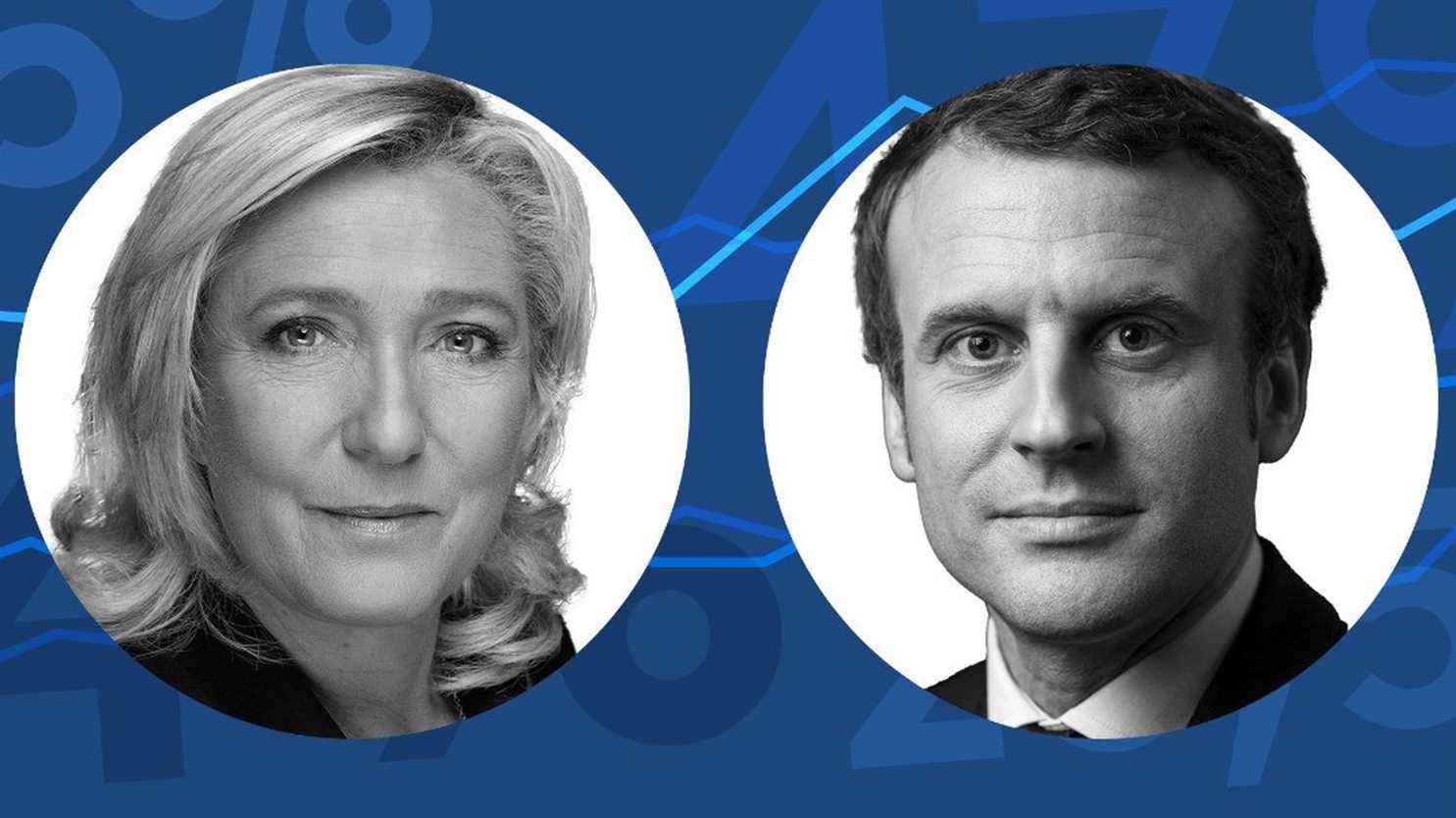franceinfo would like to remind you that a poll is not a prediction, but a snapshot of public opinion at a given moment. A survey is necessarily accompanied by a margin of error, also called “margin of uncertainty” or “confidence interval”. The smaller the sample, the greater the margin of error. For more details, here is everything you need to know to decipher the polls.
It is the outgoing president who leads the race at the entrance to the final stretch of the 2022 presidential election, according to our daily Ipsos-Sopra Steria survey for franceinfo and Le Parisien-Today in Francepublished Monday, April 18. Emmanuel Macroncandidate for re-election, is credited with 56% of voting intentions in the second round (+0.5 points), against 44% for Marine Le Pen (-0.5 point), its competitor from the National Rally (RN). The margin of error is 3.2 points.
Six days from the second round, and two days from the long-awaited debate between the two finalists of the ballot, the evolution of vote transfers clearly benefits Emmanuel Macron. Among Jean-Luc Mélenchon’s voters in the first round, 46% (-5 points) still do not express a choice: this proportion of undecided or supporters of abstention and blank voting had risen to 56% at the end of last week. Lhe candidate for whom they are most likely to vote in the second round is Emmanuel Macron (38%, +5 points) ahead of Marine Le Pen (16%, stable).
Among the voters of Yannick Jadot (Europe Ecologie-Les Verts), the unexpressed are 32%. 61% of voters in the first round indicate that the candidate for whom they are most likely to vote in the second round is Emmanuel Macron (+2 points), against 7% for Marine Le Pen (stable).
Among the voters of Valérie Pécresse (Les Républicains) in the first round, 31% do not express a choice (+7 points compared to the previous measurement). 52% of them indicate that the candidate they are most likely to vote for in the second round is Emmanuel Macron, and only 17% (-4 points) are considering voting for Marine Le Pen.
As for the voters of Eric Zemmour (Reconquest!), it is still towards Marine Le Pen that the vast majority of them turn: 73% (-3 points). But this proportion is steadily declining: on April 13, they were 81%. Conversely, 11% plan to vote Emmanuel Macron. 16% express no choice. Either because they do not wish to respond, or because they have chosen abstention or a blank vote.
Six days before the second ballot, 72% of French people questioned are sure that they will vote (range: between 70 and 74%). A figure slightly lower than the effective participation rate during the second round of the 2017 presidential election (74.6%).
Of those who are certain to vote, 86% say they have made their choice and that it will be final, while 14% believe that their vote can still change. The voters of Emmanuel Macron are less and less numerous to doubt: 92% (+5 points) affirm that their choice is final, only 8% recognize that they can still change their mind. For Marine Le Pen, the convinced are 88% (-4 points), the undecided are 12%. Among those who intend to come on April 24 to vote blank or null, the reflection is obviously still in progress: only 53% are sure of their choice (-18 points), and 47% ‘between them can still change their minds.
Methodology. This barometer is produced for franceinfo and Le Parisien-Today in France until the second round of the presidential election and is based on the methodology of the “rolling poll”, or rolling poll. Every day, about 500 people registered on the electoral lists are questioned. The results published on a daily basis systematically report the last three samples questioned, to obtain a reconstituted sample of approximately 1,500 people.
This Ipsos-Sopra Steria survey for franceinfo and Le Parisien-Today in France published on April 18 is based on a total sample of 1,682 people registered on the electoral lists, constituting a representative sample of the French population aged 18 and over. The results presented show the accumulation of the interviews carried out over the last three days. The sample was questioned by Internet and was constituted according to the method of quotas (sex, age, profession of the person questioned, category of agglomeration, region).
